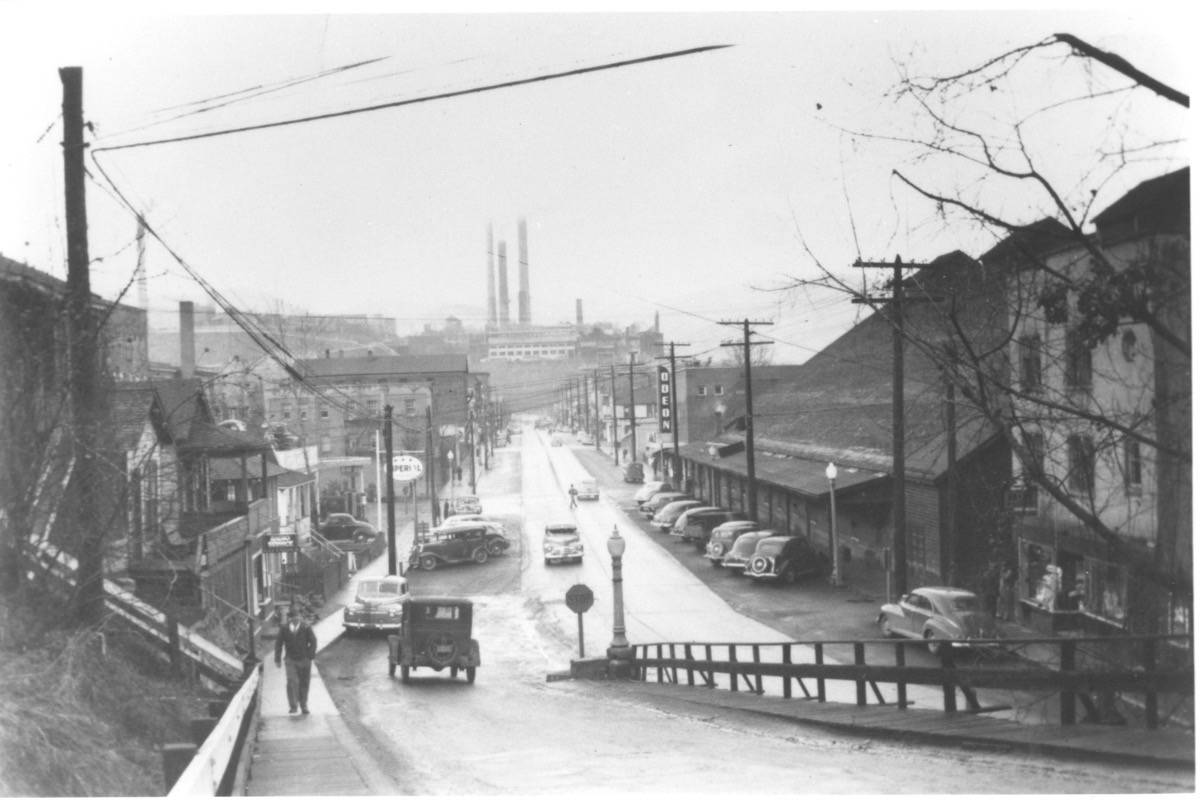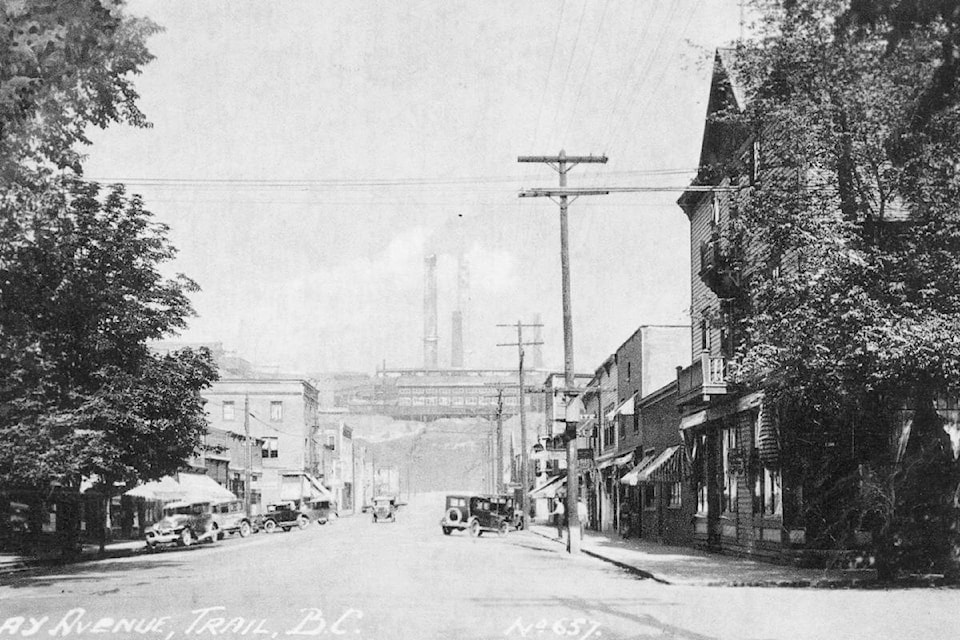One of the most recognizable scenes in the Silver City is the view from Bay Avenue looking toward the smelter.
This image has evolved ever since pioneers landed in the City of Trail 125 years ago to work at the hill, so the idea of looking back at Bay Avenue development presents a compelling mini-series for our Trail Blazers feature.
This is the second in a series of photos from the Trail Museum and Archives, one dating back almost a century.
The first photo (9641-600) is an image from the 1920s, capturing Bay Avenue looking towards the smelter.
In the roaring 20s decade, Trail’s population continued to grow, from 3,020 in 1921 to 7,573 in 1931.
“In this photo, Bay Avenue reflects this continued development,” began Jesslyn Jarvis, collections coordinator. “The automobile, which arrived in Trail in 1907, had become common place, and wooden buildings and store fronts were being replaced with brick.”
Bay Avenue, unlike it is now, was a mix of business and residential buildings, and lined with fully grown trees on either side of the street, some of which can be seen at the edges of this photo.
By end of the 1920s, CM&S Co. (now Teck) was one of the world’s leading producers of zinc and lead.
“However, like the rest of Canada, Trail would be affected by the Great Depression,” Jarvis explained. “With many people out of work or working fewer hours, between 1929 and the 1939 beginning of the Second World War.”
The second photo (5408-600) dates to the 1940s.
Bay Avenue is once again a bustling street of business and culture. On the right side of the photo is the barn-like Fruit Fair building. Constructed in 1911 and demolished in 1950, this building was the site of various fairs and dances, and housed Trail’s first arena with an artificial ice plant installed in 1927.
“Here, the Smoke Eaters practiced to become 1939 World Champions,” Jarvis said. “Just beyond the Fruit Fair building is the Odeon Theater and across the street is the Imperial gas station.”
For the first half of this decade the world was at war, and 120 Trail men paid the ultimate sacrifice, while the rest of the city fundraised to support the war effort.
“A Flower-class Corvette (British class of ship), named the H.M.C.S. Trail, served as an escort ship in the North Atlantic during the Second World War,” Jarvis said.
Then, in 1948, most of Bay Avenue was under water as the Columbia River flooded.

